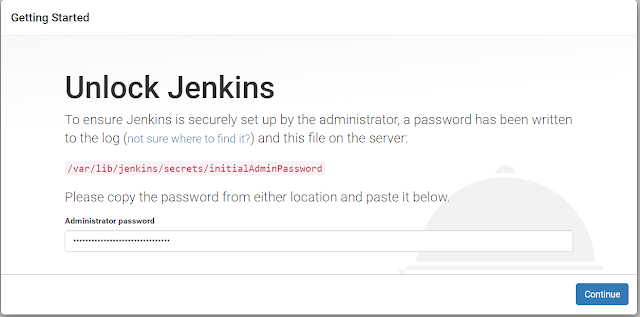Installation
Prerequisites
Identify appropriate installation file for your platform and download from oracle software cloud:
http://netgik.blogspot.in/2017/02/oracle-weblogic-server-installers.html
Overview of WebLogic Server System Administration
https://docs.oracle.com/cd/E13222_01/wls/docs81/adminguide/overview.html
Understanding WebLogic Server Domains
https://docs.oracle.com/cd/E13222_01/wls/docs90/domain_config/understand_domains.html
Node Manager is a WebLogic Server utility that enables you to start, shut down, and restart Administration Server and Managed Server instances from a remote location. Before 12c, a Node Manager process was not associated with a specific WebLogic domain but with a host machine
Although Node Manager is optional, it is recommended if your WebLogic Server environment hosts applications with high availability requirements.
If you run Node Manager on a machine that hosts Managed Servers, you can start and stop the Managed Servers remotely using the Administration Console or from the command line. Node Manager can also automatically restart a Managed Server after an unexpected failure.
Java-based Node Manager runs within a Java Virtual Machine (JVM) process. It is recommended that you run it as a Windows service on Windows platforms and as an operating system service on UNIX platforms, allowing it to restart automatically when the system is rebooted.
The relationship between Node Manager, its clients, and the server instances it controls.
Other URLs:
http://onlineappsdba.com/index.php/2008/07/24/domain-administration-managed-server-cluster-in-oracle-weblogic/
http://middlewaremagic.com/weblogic/?p=1914
- 1-GHz CPU
- 3.9 GB
of Disk Space
- A
minimum of 1 GB RAM, although Oracle recommends 2 GB of RAM.
- 8-bit
color depth (256 colors) is required.
- The installation program
requires a Java run-time environment (JRE) to run. A JRE is bundled in the
Windows 32-bit and Linux x86 installation programs, as well as in some UNIX
installation programs (those with file names ending in
- To run the .bin). .jar installation programs, you must have the appropriate version of
the JDK installed on your system, and include the bin directory of the JDK at the beginning of the PATH variable definition.Identify appropriate installation file for your platform and download from oracle software cloud:
http://netgik.blogspot.in/2017/02/oracle-weblogic-server-installers.html
Overview of WebLogic Server System Administration
https://docs.oracle.com/cd/E13222_01/wls/docs81/adminguide/overview.html
Understanding WebLogic Server Domains
https://docs.oracle.com/cd/E13222_01/wls/docs90/domain_config/understand_domains.html
Weblogic defines the roles of Admin/Managed server as follows:
- Admin Server
- can be only one for a Domain, which works like a Central Configuration/Monitoring controller for the entire domain
- runs the console, where you can create new managed servers, define DataSources (DB connections), JMS queues, deploy apps to Managed Servers, etc.
- Managed Server
- additional WebLogic Server instances
- you deploy Web applications, EJBs, and other resources onto the Managed Servers and use the Administration Server for configuration and management purposes only. This is where you run your apps.
- Managed Servers can be grouped to clusters.
- one of the examples of a Managed Server is a server running SOA applications, like OSB or BPEL.
What is domain in WebLogic ?
What is Administration Server ?
What is Managed Server ?
What is Cluster in WebLogic ?
Although Node Manager is optional, it is recommended if your WebLogic Server environment hosts applications with high availability requirements.
If you run Node Manager on a machine that hosts Managed Servers, you can start and stop the Managed Servers remotely using the Administration Console or from the command line. Node Manager can also automatically restart a Managed Server after an unexpected failure.
Java-based Node Manager runs within a Java Virtual Machine (JVM) process. It is recommended that you run it as a Windows service on Windows platforms and as an operating system service on UNIX platforms, allowing it to restart automatically when the system is rebooted.
The relationship between Node Manager, its clients, and the server instances it controls.
Other URLs:
http://onlineappsdba.com/index.php/2008/07/24/domain-administration-managed-server-cluster-in-oracle-weblogic/
http://middlewaremagic.com/weblogic/?p=1914



